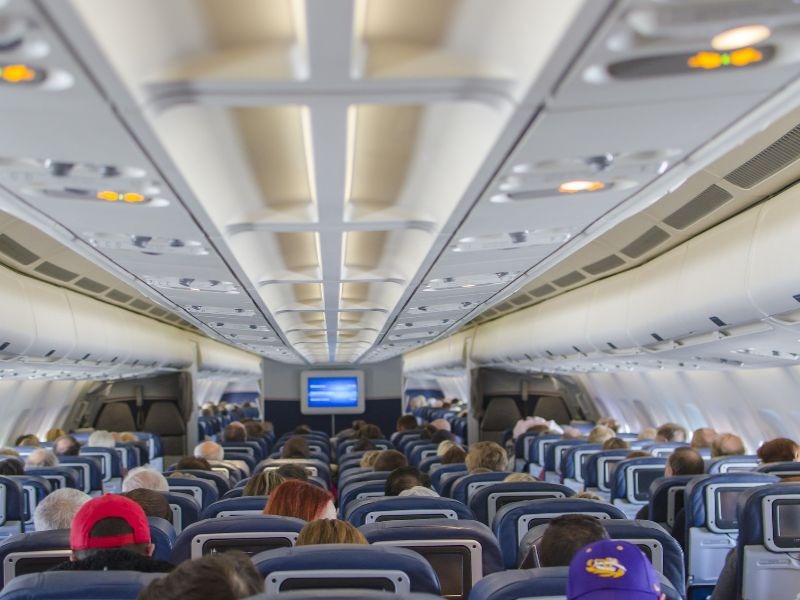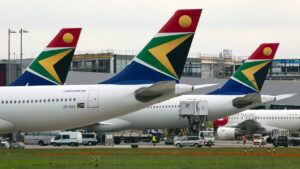Vital Vio CEO Colleen Costello discusses what more aviation stakeholders could do to guarantee the safety of their passengers and help flatten the curve of the ongoing Covid-19’s spread.
As the Coronavirus pandemic continues to spread, claiming thousands of lives worldwide, the aviation industry is having to deal with increasingly restricted services and plummeting revenues amid economic uncertainty and travel bans.
In these challenging times, industry bodies like the Airport Council International (ACI) and its regional divisions, the International Air Transport Association (IATA) and more are working around the clock to support small and large aviation enterprises in their struggles.
However, while most operations have been brought to a halt due to the closure of borders in several countries, many governments are still cooperating with national carriers to repatriate those who are stranded abroad, to allow essential travel to take place.
With some flights still happening (albeit largely reduced) and airports still open, the health and safety of passengers and crew have never been more important.
Colleen Costello, the CEO of Vital Vio – a US-based company that embeds LED technology into common household lights to continuously kill bacteria and other germs – shares her views on what aviation companies should and can do to guarantee the wellbeing of their customers and employees.
Adele Berti: What are the main health and safety issues facing airline carriers and airports right now?
Colleen Costello: The current Covid-19 crisis has put everybody in difficult and uncertain times. In the airport space, the biggest challenges with germs across the board are that they’re invisible. That’s a really difficult challenge when you’re managing large spaces like in airports or tight spaces within an aircraft. Germs are invisible and they can live on surfaces for an extended period of time, as well as potentially replicate while they’re on the surfaces.
I’m talking about germs broadly, but Covid-19 is a virus and you can’t see whether it’s on the surface or whether someone has it. From a health perspective, a big part of the challenge is how aggressive do airlines and airports need to be in either disinfecting, sanitising surfaces or testing people as they come throughout their facilities.
So, it’s a challenging time for those airport stakeholders who work with a number of partners in the travel industry. There are also challenges associated with how you identify where the germs are living and how they’re being transmitted across people when you have crowded spaces.
AB: How are aviation players working to protect their passengers and employees?
CC: Unfortunately, the reality of the war we have on germs is that there are no guarantees and that’s what makes a lot of these environments very challenging, but there are really basic things that do curb and break the transmission curve between people. From an airline and airport’s perspective, it’s really about clarity of communication to passengers and staff of the seriousness of the individual paths and behaviours which, if everybody is very vigilant, can be effective at keeping everybody safe for passengers, as well as the staff.
A number of the airlines we work with are taking rather aggressive measures before and after the flight – whether it be through our technology or different chemical bombing solutions – in order to make sure that anything that could have landed in that environment is killed before people come on-board. I’ve seen a lot of airlines move very quickly overnight to try to get whatever technology was available.
AB: What can global airports do on their end?
CC: Airports tend to have large facilities and attract big groups of people from all over the world in one space. So, overall they’re not a great spot for health and wellness and there’s definitely more they can do to ensure that they are utilising new technologies and tools to provide more of the so-called ‘inhospitable environment’ for germs.
There are many tools available that can enhance an airport’s cleanliness because there are a lot of challenges around keeping surfaces clean especially when you have many people walking throughout your facility. So there is definitely room for improvement in what relates to keeping those spaces clean and keeping the staff and guests throughout those places safe.
AB: Should stakeholders start promoting the use of masks and gloves for personnel and travellers?
CC: Face masks are important for really medical personnel. We need to reserve them for medical personnel in the US as there is a shortage there. If you’re healthy and well, you know, a mask is not really the solution. In the event that you have symptoms whatsoever, the recommendation is to not be travelling. Unfortunately, in our recent “The Dirty Truth” survey – which we carried out before the Covid-19 issue spread out – one in five Americans admitted to still travelling when they’re sick, which is an absolute no-no. There’s no harm necessarily in gloves.
I think it should be mostly about education and awareness of how these germs actually transmit. So, that’s where the airline carriers can play a strong role, by providing clarity of communication to their passengers and staff of exactly what’s going on and how they can all help in the fight against Covid-19.
AB: Can you expand on the findings of your survey?
CC: Unfortunately, the results were not great across the board. Two in five Americans admit to still travelling when they’re sick, putting themselves and those around them in danger. Covid-19 has made that a lot more in-focus with the severity of the virus. [In addition] 60% of respondents never wipe down surfaces that they touch while travelling, so they’re leaving germs on those surfaces, and one in four Americans don’t sanitise their phones while travelling, which is another opportunity to both spread and pick up germs.
Source: https://www.airport-technology.com/features/coronavirus-aviation-industry/




